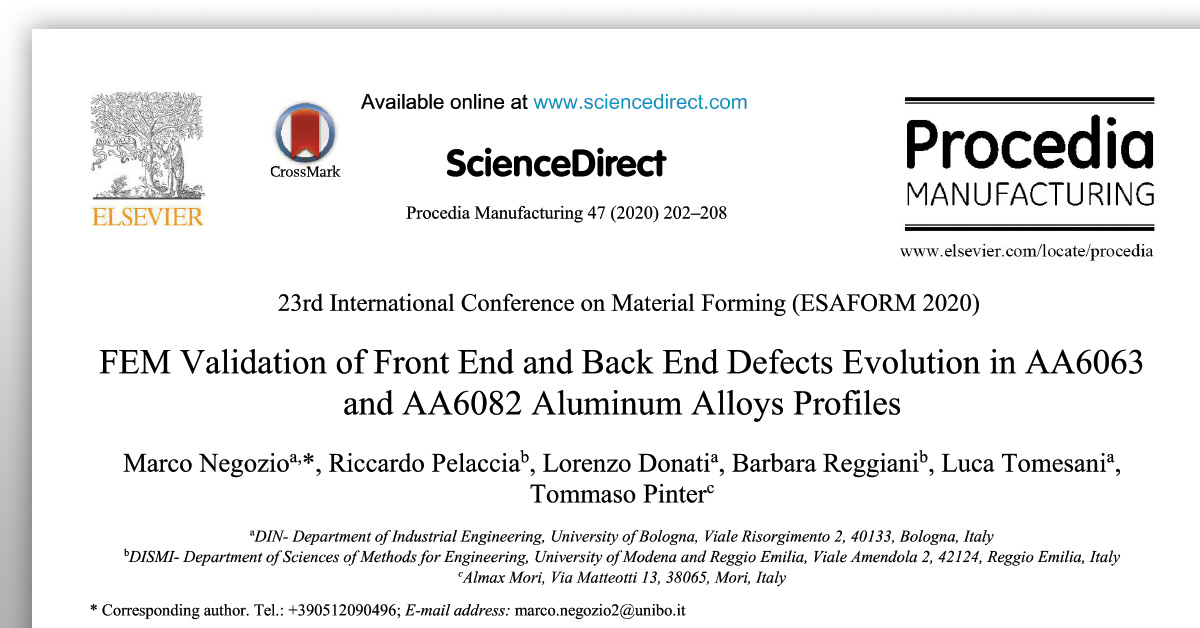
FEM Validation of Front End and Back End Defects Evolution in AA6063 and AA6082 Aluminum Alloys Profiles
Abstract
An increasing industrial interest in order to obtain greater process efficiency. Today, extrusion industrial practice faces the issue by means of technician’s experience, empirical rules or, in most critical profiles, through time consuming and expensive experimental analyses. On the other side, FEM simulation of extrusion dies is becoming a common support tool for the design of new critical dies. Stating this scenario, the possibility to include the prediction of front end and back end defects evolution as simulation output can then be easily obtained at almost comparable computational costs. In this paper the FEM code Altair HyperXtrude® is used for the simulation of 2 industrial cases made by AA6063 and AA6082 alloys following the transient moving boundaries approach. Experimentally, the profiles were extruded, sectioned, polished and etched with caustic soda in order to reveal and measure front and back end development in front of and behind the profile stop mark. The data obtained from experimental analyses are initially discussed referring to billet skin contamination and charge weld evolution, then compared to industrial experience, to theoretical and empirical methods available in literature and to FEM results in order to evaluate pros and cons of each evaluation method.
(Marco Negozio, Riccardo Pelaccia, Lorenzo Donati, Barbara Reggiani, Luca Tomesani, Tommaso Pinter)
